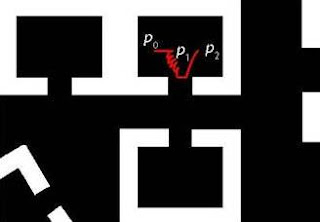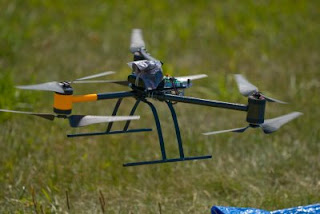 Ireland has announced funding worth more than €60 million in support of advanced scientific research. The mix of State and private sector money will back three large research centres based at University College Cork, Trinity College Dublin and NUI Galway. The money will go into “Csets”, Centres for Science, Engineering and Technology. These are large-scale investments designed specifically to encourage and support linkages between academic researchers and companies. Full story here.
Ireland has announced funding worth more than €60 million in support of advanced scientific research. The mix of State and private sector money will back three large research centres based at University College Cork, Trinity College Dublin and NUI Galway. The money will go into “Csets”, Centres for Science, Engineering and Technology. These are large-scale investments designed specifically to encourage and support linkages between academic researchers and companies. Full story here.
 Germany's Education and Research Minister Annette Schavan has come up with proposals to fund measures in higher education and research as a way to help stimulate the country's flagging economy. Investing around EUR15 billion (US$20 billion) in higher education infrastructure and providing tax incentives for small and medium-sized business to spend more on research could provide a vital boost to business, Schavan says. Full story here.
Germany's Education and Research Minister Annette Schavan has come up with proposals to fund measures in higher education and research as a way to help stimulate the country's flagging economy. Investing around EUR15 billion (US$20 billion) in higher education infrastructure and providing tax incentives for small and medium-sized business to spend more on research could provide a vital boost to business, Schavan says. Full story here.
 The U.S. Department of Defense will invest an additional $400 million over the next five years to support basic research at academic institutions. The goal is to fund research of up-and-coming scientific areas and to foster fundamental discoveries related to the department's challenging technical problems. Merit-based awards, based on peer review, will support projects begining in fiscal 2009 that will be funded for five years. Projects will be based on various academic areas, like physics, ocean science, chemistry and electrical engineering. Full story here.
The U.S. Department of Defense will invest an additional $400 million over the next five years to support basic research at academic institutions. The goal is to fund research of up-and-coming scientific areas and to foster fundamental discoveries related to the department's challenging technical problems. Merit-based awards, based on peer review, will support projects begining in fiscal 2009 that will be funded for five years. Projects will be based on various academic areas, like physics, ocean science, chemistry and electrical engineering. Full story here.
 Philippines Commission on Higher Education Chairman, Emmanuel Angeles, has vowed to strengthen research and development capability in state universities and colleges. The country's 111 state institutions have been divided into six clusters to maximise the utilisation of resources. "We are going to give full support to the research and development arm of tertiary institutions to upgrade the quality of higher education in the country. We will ask Congress to provide us additional funding to boost this program," Angeles said. Full story here.
Philippines Commission on Higher Education Chairman, Emmanuel Angeles, has vowed to strengthen research and development capability in state universities and colleges. The country's 111 state institutions have been divided into six clusters to maximise the utilisation of resources. "We are going to give full support to the research and development arm of tertiary institutions to upgrade the quality of higher education in the country. We will ask Congress to provide us additional funding to boost this program," Angeles said. Full story here.
 The European Union last week unveiled an anti-recession plan which includes strong spending on research and development. European Commissioner for Science and Research, Janez Potočnik, said the European Economic Recovery Plan looked beyond the "short distance" of the immediate recession and took account of the commission's longer-term plan of building Europe's future prosperity on the basis of a knowledge economy. The recovery plan proposed three major public-private partnerships expected to be worth more than EUR7 billion (US$8.8 billion) and also called on member states to increase investment in R&D and education. Full story here.
The European Union last week unveiled an anti-recession plan which includes strong spending on research and development. European Commissioner for Science and Research, Janez Potočnik, said the European Economic Recovery Plan looked beyond the "short distance" of the immediate recession and took account of the commission's longer-term plan of building Europe's future prosperity on the basis of a knowledge economy. The recovery plan proposed three major public-private partnerships expected to be worth more than EUR7 billion (US$8.8 billion) and also called on member states to increase investment in R&D and education. Full story here.
 The Korean government announced its selections for the multi-million-dollar World Class University program which aims to turn Korea’s universities into top-notch international institutions. A total of 52 projects from 18 universities have been chosen to receive grants, with major schools like Seoul National University accounting for most of the picks to receive funding. Among the winners, Seoul National won funding for seven projects. Korea Advanced Institute of Science and Technology and Postech got three each, and Korea, Sungkyunkwan and Yonsei universities each had two projects selected. A total of 825 billion won ($571 million), or 165 billion won a year, has been allocated through 2012. Full story here.
The Korean government announced its selections for the multi-million-dollar World Class University program which aims to turn Korea’s universities into top-notch international institutions. A total of 52 projects from 18 universities have been chosen to receive grants, with major schools like Seoul National University accounting for most of the picks to receive funding. Among the winners, Seoul National won funding for seven projects. Korea Advanced Institute of Science and Technology and Postech got three each, and Korea, Sungkyunkwan and Yonsei universities each had two projects selected. A total of 825 billion won ($571 million), or 165 billion won a year, has been allocated through 2012. Full story here.
 The Purdue University Board of Trustees has approved the use of $10.8 million from the Vincent P. Reilly Memorial Fund for the College of Engineering to finance portions of the college's, including global education, research initiatives and faculty development. The university will use $2.3 million to support a curriculum innovation project and cooperative work programs and internships. More than $4 million will be used to provide seed funding for new research initiatives and provide gap funding to support employment of research staff. Full story here.
The Purdue University Board of Trustees has approved the use of $10.8 million from the Vincent P. Reilly Memorial Fund for the College of Engineering to finance portions of the college's, including global education, research initiatives and faculty development. The university will use $2.3 million to support a curriculum innovation project and cooperative work programs and internships. More than $4 million will be used to provide seed funding for new research initiatives and provide gap funding to support employment of research staff. Full story here. Dr. Bernard Gordon, chairman of NeuroLogica Corporation, has made a $1.5 million gift The Citadel School of Engineering (The Military College of South Carolina). This generous contribution will support scholarship, program, equipment and classroom enhancements to advance the college’s highly ranked engineering program. This contribution will provide essential new equipment for the Electrical and Computer Engineering Department for the next five years as well as renovate an existing classroom in Grimsley Hall to create a first-class, technologically state-of-the-art conference and seminar room, to be named in the donor’s honor. Full story here.
Dr. Bernard Gordon, chairman of NeuroLogica Corporation, has made a $1.5 million gift The Citadel School of Engineering (The Military College of South Carolina). This generous contribution will support scholarship, program, equipment and classroom enhancements to advance the college’s highly ranked engineering program. This contribution will provide essential new equipment for the Electrical and Computer Engineering Department for the next five years as well as renovate an existing classroom in Grimsley Hall to create a first-class, technologically state-of-the-art conference and seminar room, to be named in the donor’s honor. Full story here.
 University of Maryland, Baltimore County (UMBC) has received a grant from the Base Realignment and Closure (BRAC) Higher Education Investment Fund. The grant money will support the development of courses in UMBC’s Engineering Management and Electrical Engineering master’s programs that will assist the needs of professionals relocating to Aberdeen and Fort Meade. UMBC will develop four new graduate courses in electrical engineering that are responsive to workforce needs. Full story here.
University of Maryland, Baltimore County (UMBC) has received a grant from the Base Realignment and Closure (BRAC) Higher Education Investment Fund. The grant money will support the development of courses in UMBC’s Engineering Management and Electrical Engineering master’s programs that will assist the needs of professionals relocating to Aberdeen and Fort Meade. UMBC will develop four new graduate courses in electrical engineering that are responsive to workforce needs. Full story here.
 Despite the challenging federal funding environment, the University of Cincinnati secured $20 million more in research dollars in 2008 than in 2007, pulling in a record $353 million. Engineering increased research dollars to more than $30 million, a 64 percent increase beyond 2007's $18.6 million. Specific successes recognized by Degen, VP for research include the expansion to Children's Hospital and the completion of the Center for Academic and Research Excellence (CARE)/Crawley Building (one of the largest health-research complexes in the United States), the $28 million donated to UC for aerospace engineering, Choose Ohio First scholarships program, a three-year, $10 million partnership with Ethicon Endo Surgery and a $20 million anonymous gift to support UC's space exploration program. Full story here.
Despite the challenging federal funding environment, the University of Cincinnati secured $20 million more in research dollars in 2008 than in 2007, pulling in a record $353 million. Engineering increased research dollars to more than $30 million, a 64 percent increase beyond 2007's $18.6 million. Specific successes recognized by Degen, VP for research include the expansion to Children's Hospital and the completion of the Center for Academic and Research Excellence (CARE)/Crawley Building (one of the largest health-research complexes in the United States), the $28 million donated to UC for aerospace engineering, Choose Ohio First scholarships program, a three-year, $10 million partnership with Ethicon Endo Surgery and a $20 million anonymous gift to support UC's space exploration program. Full story here.
 A gift of $10 million was given by Bill Lyles, his family and companies to better the education for students of College of Engineering, California State University Fresno. The university agreed to match Lyles’ donation. With the university’s added money, there will be a total of $20 million being put toward the college for the coming years. Full story here.
A gift of $10 million was given by Bill Lyles, his family and companies to better the education for students of College of Engineering, California State University Fresno. The university agreed to match Lyles’ donation. With the university’s added money, there will be a total of $20 million being put toward the college for the coming years. Full story here.









 For instance, the QUARC demonstration examples illustrate the following:
For instance, the QUARC demonstration examples illustrate the following:












